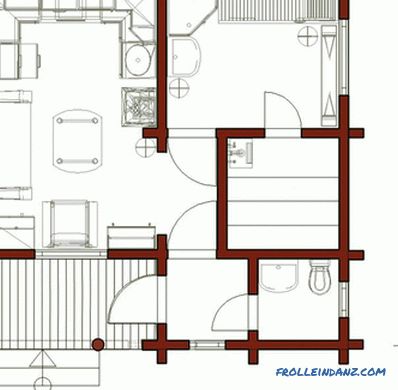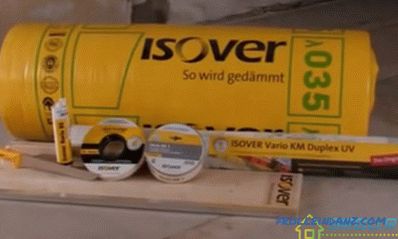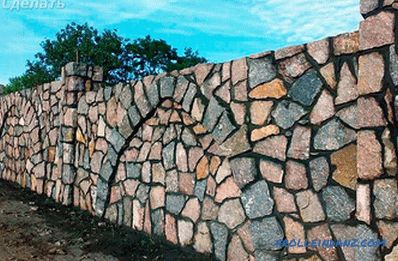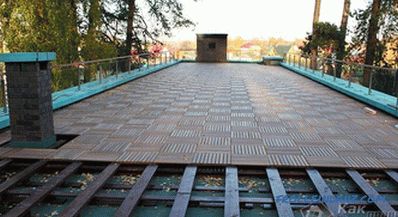The fastening of the laminate to the wall at first glance will seem unusual to a person uninitiated in the trend of modern repair. However, there is no exotic here. In fact, this type of finish is not only unusual, interesting appearance, but also very practical and durable. Laminate has been used for quite a long time for laying on the floor in various rooms - everyone is used to it. But the facing of this material walls, perhaps, is extremely rare. There is a mass of photos by which one can judge the interesting character of this method of finishing a room.
In this article, we will look at how to laminate the walls with your own hands, the technical and aesthetic components of this method. The use of laminate for laying on the wall, is increasingly used in the interior of residential and office space. Using MDF panels and various types of siding is a thing of the past. In the article we will tell how to fix the laminate on the wall with your own hands, show photos and video instructions.
Advantages of laminate for wall cladding
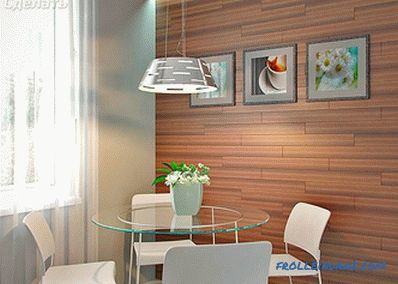 The wall is sheathed with laminate
The wall is sheathed with laminate
- The main advantage of the laminate in its environmental friendliness. It does not contain toxic fumes, so it is great for widespread indoor use.
- Laminate was originally designed as a floor covering, therefore it has excellent strength characteristics, which means that it will last on the wall for a very long time.
- Since the cost of the laminate directly depends on the class of strength, then low-grade laminate is perfect for wall cladding, while not at the expense of quality.
- A huge number of different textures and colors. This opens up great horizons for the imagination of wall decoration.
- Easy installation of laminated panels. So, lay a laminate under the power of even an inexperienced person in this business.
Disadvantages
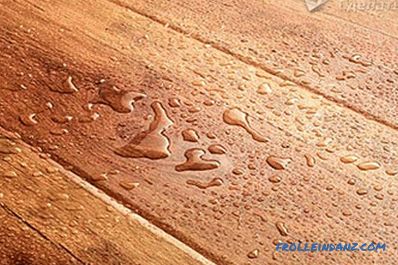 The laminate is afraid of moisture
The laminate is afraid of moisture
Unfortunately, there is this method and disadvantages. Fortunately, there are not many of them:
- Susceptibility of this finishing material to moisture. Therefore, prolonged contact of the laminate with water may cause deformation or swelling of the panels.
- Certain sensitivity to sudden temperature changes. This disadvantage must be considered, for example, when facing the walls of the kitchen. At especially adverse temperature conditions, the quality of the appearance may slightly decrease.
That's all. It is enough to observe some precautions, for example, it is not recommended to lay laminate on the walls of the bathroom, balcony, or kitchen. As a finishing coating of the walls of these rooms is best to use traditional, proven methods.
How to choose a laminate for wall cladding
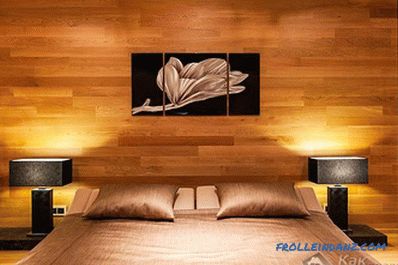 The same laminate
The same laminate
- Conventional shunt laminate. This view is familiar to everyone. It is most often laid on the floor. The convenience of its use lies in the fact that the laminated panels themselves are connected by a special shunt lock;
- Glue laminate. This type of panel is connected to the surface and to each other with the help of construction glue, or ordinary liquid nails.
- Laminate with click lock. This view has a more advanced lock that snaps into place without allowing the panels to disengage. This laminate has a higher strength.
Laminate is divided not only by color and texture, but the main indicator is the class of strength. This parameter determines the price of the material. It must be remembered - the higher the class, the higher the quality of the laminate. The advantage of using laminate board for wall finishing is also the possibility of using low-class panels 21-31. After all, there will be no mechanical load on the laminate.
How to fix on the wall
 Fixing on the wall
Fixing on the wall
So, for beautiful finishes on the walls, you will need to carefully align the surface. The beauty and accuracy of facing depends on it. Treat this preparatory action as the most important. Of considerable importance is how to fix the laminate. Laying laminate on the wall in two ways:
- Fastening to the crate. It is used in case of large curvature of the walls. The advantage of this method is that there is no need to level the walls. In addition, under the crate, you can put an additional layer of thermal noise insulation. In modern budget apartments with "cardboard" walls, this method may be preferable.
- First of all, you need to calculate the required amount of laminate. To this amount you need to add another 10 percent for trimming and fitting.
- Prepare a wall for laying. The wall should be smooth and dry. If you decide to crate, it will require a little more effort from you.Lathing is performed either from wooden bars, or from metal or aluminum profiles, which are mounted on the wall with self-tapping screws. The distance between the screws should be no more than 40 cm.
- Panels can be fixed to the wall both vertically and horizontally. If you plan to veneer the entire wall from the ceiling to the floor, it is better to start from above.
- In the case of gluing the laminate, it is treated with glue, pressed against the wall and fixed for a while, until the glue seizes. The panels on the batten are attached with brackets, which are used for the installation of plastic panels.
- After finishing the walls, you need to give them a finished look with the installation of ceiling and floor plinths.
- Gluing directly onto the wall. Here preparation of the surface for pasting is of particular importance. It can be used for various glue: construction, liquid nails, titanium, etc. The application of glue is produced by a "snake".
Workflow
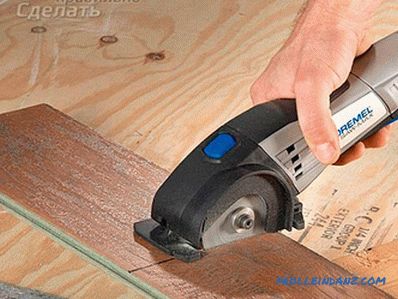 When counting the amount of laminate, add 10% for the fit
When counting the amount of laminate, add 10% for the fit
- First of all, you need to calculate the required amount of laminate. To this amount you need to add another 10% for trimming and fitting.
- Prepare a wall for laying. The wall should be smooth and dry. If you decide to crate, it will require a little more effort from you. Lathing is performed either from wooden bars, or from metal or aluminum profiles, which are mounted on the wall with self-tapping screws. The distance between the screws should be no more than 40 cm
- The panels can be mounted to the wall both vertically and horizontally. If you plan to veneer the entire wall from the ceiling to the floor, it is better to start from above.
- In the case of gluing the laminate, it is treated with glue, pressed against the wall and fixed for a while, until the glue seizes. The panels on the batten are attached with brackets, which are used for the installation of plastic panels.
- After finishing the walls, you need to give them a finished look with the installation of ceiling and floor plinths.
Photo
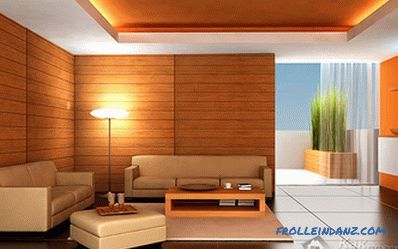 The corner of the room is finished with laminate
The corner of the room is finished with laminate
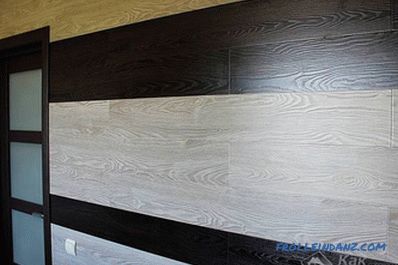 Multi-colored laminate on the wall
Multi-colored laminate on the wall
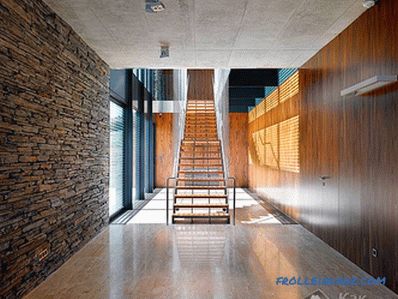 Office wall decoration
Office wall decoration
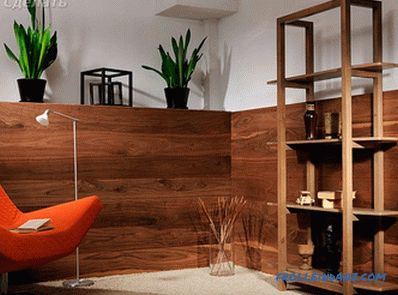 The original design of the room
The original design of the room
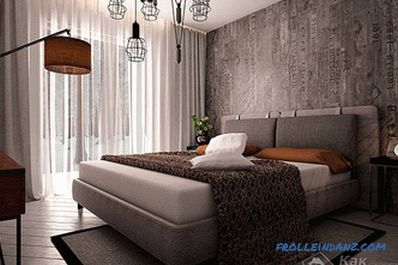 Unusual implementation in bedroom
Unusual implementation in bedroom
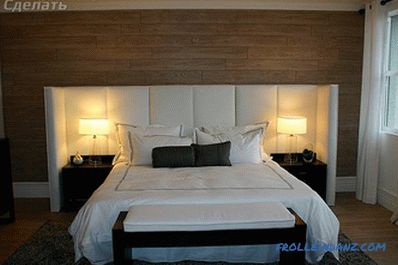 Walls in the bedroom
Walls in the bedroom
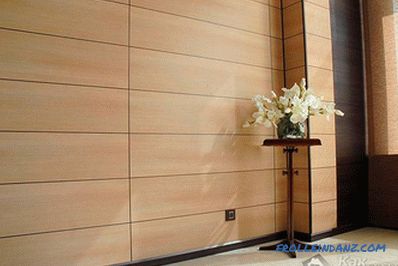 Laminate without overlapping seams
Laminate without overlapping seams
Video
This video shows the process of fixing the laminate to the wall, with explanations from the master who does the work:
This video will help you understand how to seal a niche in the wall:

